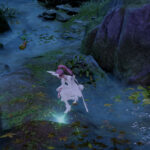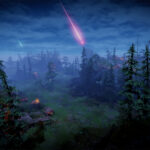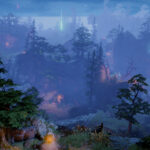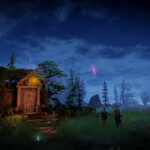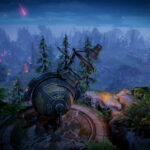
OK, listen. Astronomy is real. Astrology is not real. Video game astrology is… also not real, but at least it’s harmless and no sillier than anything else in said video game, which can’t be said for its real-world version. So Lost Ark’s new Q&A, which purports to use “International Astrology Day” (absolutely not) as a springboard to discuss its in-game astrological lore is… I have no idea where on the spectrum this sits, actually. Is this wholesome? Is this weird? Is this just an excuse to get some pretty video game screenshots? Yes probably, but Smilegate takes the whole thing super seriously; it refers to everything from the 10 Omnium Stars aka divine blessings to Arkesia itself in its quest to make this cosmological metaphor happen.
“Lost Ark has a lot of touch points with the stars, sky, and all things celestial woven throughout the game,” the studio says. “Elgacia, one of the key continents in Arkesia, is located in the skies and is home to the Lazenith, a heavenly winged race of people. The Omnium Star fragments make up a host of constellations. The lore of Lost Ark itself has much to do with astrology as well.”
“Some of the names of gods and goddesses in the game are derived from actual real-world constellations. Some examples include the god of Order, Regulus, who is named after the brightest star in the zodiacal constellation Leo. The god of Honor, Procyon, is named after the brightest star in the constellation Canis Minor. The goddess of Wisdom, Sceptrum (whose name in Korea is Crater), is named directly from the Crater Constellation. Other names of gods in the game, and their real-world astrological inspirations are:
• God of Fire, Antares: Named after the brightest star in constellation of Scorpius.
• God of Life, Aldebaran: Named after the brightest star in constellation of Taurus.
• God of Earth, Arcturus: Named after the 4th brightest star in constellation of Bootes.
• God of Frost, Sirius: Named after the brightest star in constellation of Canis Major.
• Goddess of Harmony, Gienah: Named after the brightest star in constellation of Corvus/Crow.”
Well, OK, these are indeed real stars and constellations, so maybe somebody will learn something useful after all. The team also points out the NPC astrologers, the Nineveh Observatory in Luterra, and the Stellar title that all exist in-game. It’s a stretch, but they pulled it off – and they delivered those pretty pics too.

